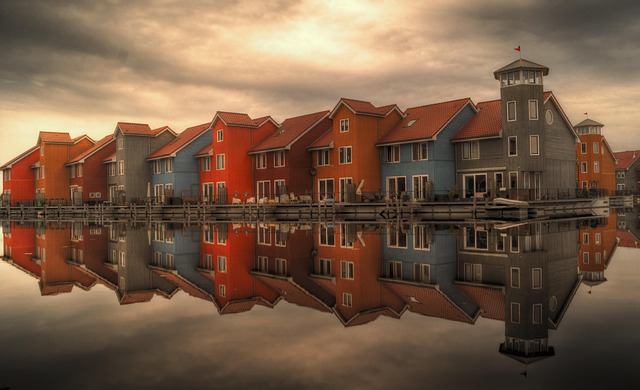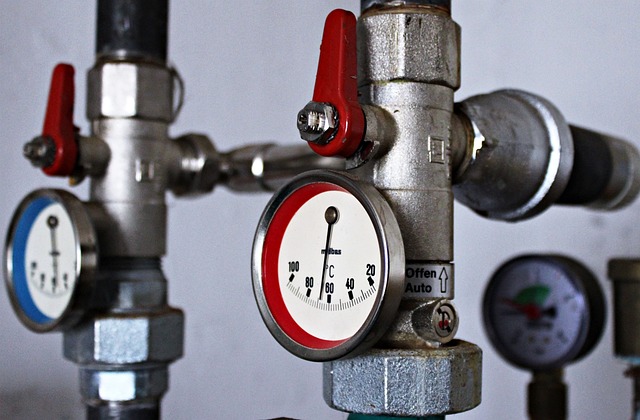Low water pressure in your home can be caused by leaks, outdated regulators, mineral buildup, or inefficient pipe design. Diagnosing and addressing these issues is key to increasing water pressure. Solutions include repairing leaks, replacing old components, relining pipes, checking faucet aerators, inspecting clogged pipes, maintaining plumbing systems, and fixing leaks. Implement these steps to optimize your home's water pressure for improved performance and efficiency.
Do you ever feel like your shower is struggling to provide a satisfying spray? Or perhaps your faucet dribbles instead of flows? Low water pressure can be frustrating, but understanding and addressing the root cause is easier than you think. In this guide, we’ll help you navigate the issue by first exploring common causes and their effects, then offering effective solutions to boost your water pressure, leaving you with a powerful and enjoyable flow once again.
- Understanding Low Water Pressure: Causes and Effects
- Diagnosing the Problem: Identifying Common Issues
- Effective Solutions to Boost Your Water Pressure
Understanding Low Water Pressure: Causes and Effects

Low water pressure can be a frustrating issue, affecting both the performance and efficiency of your plumbing system. Understanding its causes is the first step to knowing how to increase water pressure effectively. Several factors contribute to this problem, ranging from issues at the main water supply to problems within your home’s pipes or fixtures.
One common cause is a leak in the pipes, which can reduce water flow and lower pressure. Another is an outdated or improperly adjusted pressure regulator. In some cases, mineral buildup or corrosion inside pipes can restrict water flow. Even the way your plumbing is designed or arranged can impact pressure, especially if there are long runs of small-diameter pipes. Identifying the root cause will help determine the best course of action to take, whether it’s fixing leaks, replacing old parts, or relining pipes to restore adequate water pressure in your home.
Diagnosing the Problem: Identifying Common Issues

Low water pressure can be frustrating, but diagnosing and fixing the problem is often easier than you think. Start by checking the obvious—is there a leak somewhere in your pipes? Leaks can significantly reduce water pressure, so repairing or replacing faulty fixtures or pipes is usually a good first step. Additionally, look for issues with your faucet aerators or showerheads; these simple attachments can restrict water flow without you realizing it.
Other common causes include mineral buildup, especially in older homes with copper pipes. Hard water can lead to the accumulation of minerals inside pipes and fixtures, narrowing them over time. In such cases, consider installing a water softener to mitigate this issue. If your home uses a pressure-reducing valve (PRV), ensure it’s functioning correctly; these valves lower water pressure for safety purposes but can sometimes restrict flow more than necessary. Adjusting or replacing the PRV may help increase water pressure throughout your home.
Effective Solutions to Boost Your Water Pressure

Low water pressure can be a frustrating issue, but there are several effective solutions to boost your water pressure. First, check your faucet aerators. These small devices attach to your faucets and mix air with water, which can reduce pressure. Removing or replacing them might resolve the problem.
Another common cause of low water pressure is an old or clogged pipe. Over time, pipes can accumulate mineral deposits and debris, narrowing their diameter and reducing water flow. Try flushing these pipes regularly or consider hiring a plumber to inspect and clear any blockages. Additionally, check for leaks in your plumbing system as they can significantly decrease water pressure. Repairing or replacing leaking pipes will help restore the proper water pressure throughout your home.
Low water pressure can be a frustrating issue, but with the right diagnosis and effective solutions, you can easily boost your home’s water pressure. By understanding the common causes, such as leaks, old pipes, or faulty pressure regulators, you’re already halfway there. Implement the strategies outlined in this article, including checking for leaks, replacing worn-out parts, and adjusting pressure settings, to restore adequate water pressure throughout your home. Remember, addressing low water pressure promptly not only enhances your daily routines but also saves money in the long run. So, take control and transform that weak flow into a powerful force!
